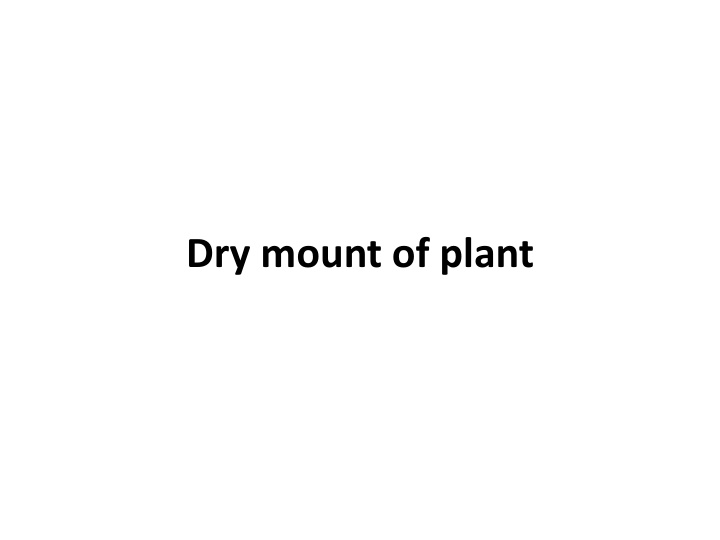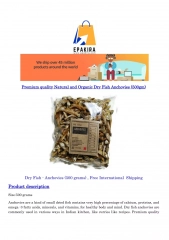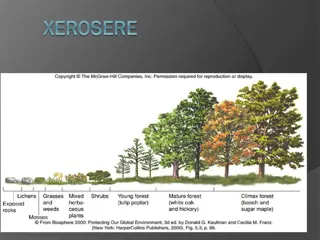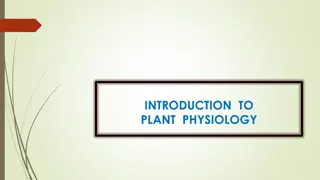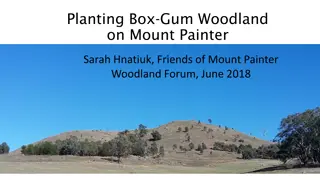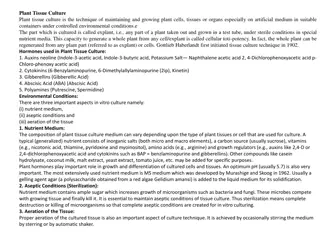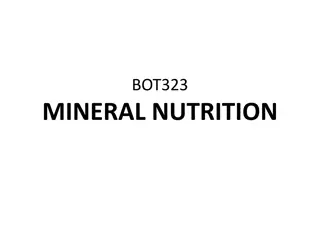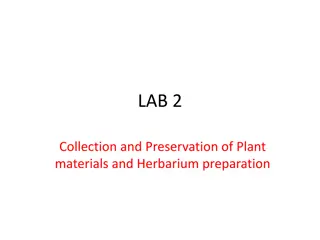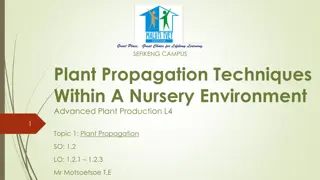Dry mount of plant
Preserved plant specimens provide vital insights into plant diversity and distribution. Learn the steps involved, from collecting plant materials to pressing and drying specimens. Equip yourself with the necessary tools like a field press, secateurs, GPS, and more for effective plant collection. Discover the importance of plant preservation and the techniques used to ensure accurate data collection and storage.
Download Presentation

Please find below an Image/Link to download the presentation.
The content on the website is provided AS IS for your information and personal use only. It may not be sold, licensed, or shared on other websites without obtaining consent from the author.If you encounter any issues during the download, it is possible that the publisher has removed the file from their server.
You are allowed to download the files provided on this website for personal or commercial use, subject to the condition that they are used lawfully. All files are the property of their respective owners.
The content on the website is provided AS IS for your information and personal use only. It may not be sold, licensed, or shared on other websites without obtaining consent from the author.
E N D
Presentation Transcript
Dry mount of plant Preserved plants specimens provide us with important information about plant diversity and distribution, and represent an observable. The steps of plant preserving: 1- Collecting of plant materials 2- Pressing and Drying plant specimens 3- Writing label (Voucher specimen)
1- Collecting of plant materials The plants are collected for reasons like: A/ Allow and support accurate identification of plants, algae, lichens and fungi. B/ Provide a permanent record for a species occurring at a particular time and place. C/ Provide the Form the basis of reliable distribution, habit and habitat information D/ Provide basic biological material for taxonomists, ecologists and other researchers. E/ Serve as vouchers for seed collections, toxicological cases, biochemical analyses and biodiscovery.
The main equipments for plant collection 1- A field press with newspapers for plant pressing
2- Secateurs to cut and trim specimens 3- GPS for recording an accurate latitude and longitude. Alternatively, mark the position on a topographic map
4- Small brown paper bags for collecting fruits, seeds, bryophytes and lichens.
5- Hand lens 6- Gloves, for handling prickly plant material or plants with corrosive sap. .
2- Pressing and Drying plant specimens Specimens are pressed in a plant (field) press, which consists of a wooden frame (for rigidity), corrugated cardboard ventilators (to allow air to flow through the press), blotter paper (to absorb moisture), and folded paper, typically a newspaper (to contain the plant material). This process is essential to dry the specimens fairly quickly, to prevent the onset of fungal attack. Fungus affected specimens are of limited value to a Herbarium. The drying of plant specimens have been usually done in field by placing the presses in the sun during the day appears to have little drying effect except for the topmost bottommost specimens. However, the sun is invaluable for drying the damp papers
3- Writing label (Voucher specimen) The data that accompanies a herbarium specimen is just as important as the specimen itself. Even a very good quality specimen is of no use to a Herbarium unless it has a written label with the information detailed below:- Collector s name: the name (s) of the person/people who collected the specimen preferably no more than 2 people. Don't include everyone who was on the Trip.
Collector's number: A unique number, usually sequential, given by the collector as a private record. Date of collection: Botanical name: If you are unsure of the identity it is still helpful to suggest a name, or at least a genus. Locality: A written description of the precise collection locality is necessary as well as a latitude and longitude reading. Habitat: Copy the information from the field note book. Habit: This information is copied from the field note book, for example spreading shrub to 2 m . Abundance: A comment on the frequency (number of individuals) of the plant at the site where you collected.
